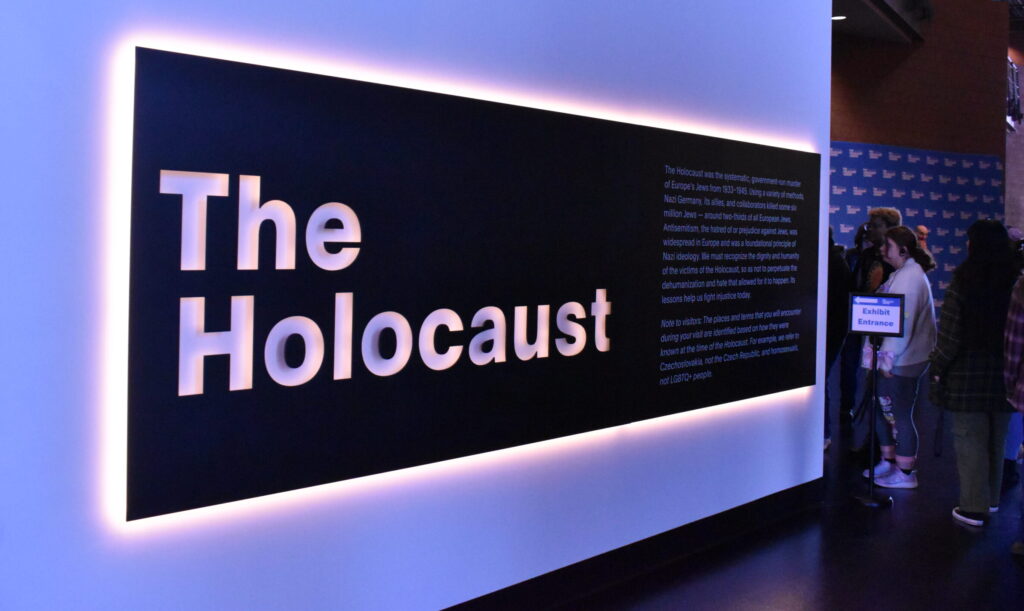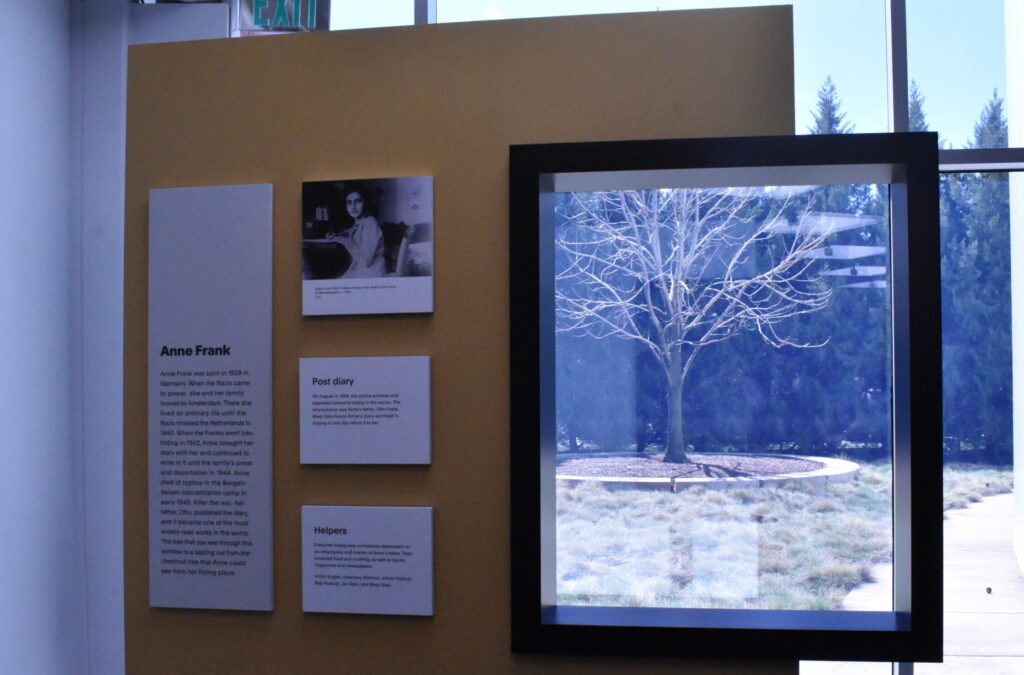Nearly 40 Ferris State University students took part in the Shoah Committee’s second annual educational trip to the Zekelman Holocaust Center and the Arab American National Museum, an experience aimed at deepening cultural understanding, historical awareness and social empathy.
The day-long trip, organized by Ferris’ Shoah Committee, offered students an immersive opportunity to explore themes of identity, representation and historical injustice.

Through exhibits, personal stories and cultural artifacts, attendees connected past atrocities and cultural contributions to current global conversations gaining not just knowledge but perspective. The initiative is part of a broader effort to encourage critical thinking and empathy across campus through all majors and faculty.
The group began at the Zekelman Holocaust Center in Farmington Hills, where students toured exhibits chronicling the rise of Nazism, personal survivor stories and the systemic persecution of Jews and other marginalized groups during World War II.
In the afternoon, the group traveled to Dearborn to visit the Arab American National Museum, where they explored exhibits focused on immigration, identity, media representation and cultural traditions within Arab American communities.
For criminal justice professor Mike Mendenhall, the museum offered more than just historical insight, it was a stark reminder of the ethical responsibility that comes with power.
“Anytime I go to a museum or think that I know a decent amount about a topic, I’m always surprised at how much more you can learn,” Mendenhall said. “We’re one influential person away from essentially affecting the masses and it’s important that we’re not just standing by when people are saying evil things or doing things that would harm others.”

He also drew connections between the Holocaust and law enforcement’s role during that era, particularly in Nazi-occupied Poland.
“Police officers in Poland took an oath to protect and serve. Not all of them but many quickly turned and sided with the Nazis whether it be out of antisemitism or out of fear,” Mendenhall said. “It just goes to show… is it just words, or is it something that you’re actually living up to?”
Following the morning at the Holocaust Center, the group headed to Dearborn for the second part of the trip at the Arab American National Museum.
Before diving into the exhibits, students were welcomed with a lunch featuring traditional Arab cuisine, including chicken and beef shawarma, hummus, falafel sandwiches, fresh pita bread and baklava. The meal served as an introduction to the culture offering a taste of the region’s hospitality and traditions that would come to life throughout the museum experience.
Tour guide at the AANM Dalton Bradford, who graduated from Brigham Young University with a major in Middle Eastern studies and Arabic, described the museum’s mission as a way to create a space for connection and reflection. Many who visit often come during times of political or cultural tension.
“There’s probably never been a time that hasn’t been relevant to come here,” Bradford said. “Anything that shows a little snapshot into what the Arab American experience is really like, just because it’s not told much in the media historically.”
In addition to the museum’s exhibits, Bradford pointed to other tools that help challenge misconceptions and deepen understanding especially when it comes to how Arab communities are portrayed in popular culture.
Bradford said the documentary “Reel Bad Arabs” by Jack Shaheen was eye-opening, helping him realize not only the sheer number of stereotypes about Arabs in film but also how harmful and widespread those portrayals have been throughout cinematic history.
While the AANM does not take official positions on current political events, Bradford explained that the space still plays a vital role for those impacted by ongoing world issues. For many, the museum serves as a place of reflection, education and connection.
“You don’t just get objects, you get to meet members of the staff, you hear their stories,” Bradford said. “Here we teach folk dance, music, food, crafts and those are all traditions that make it more real, make it more alive, and not just pictures out of a textbook. Anything that dispels stereotypes and dismantles those old ways of thinking are really important.”
For history sophomore Sincere Jones, the experience was not only educational but also personal and eye-opening. As he moved through both museums, he reflected on the deeper connections between people, faith and humanity.
“[The tours] made me realize Judaism, Christianity and Islam are all Abrahamic religions,” Jones said. “We all worship one God in total but I feel like religion was made to categorize and separate us. We are all human at the end of the day.”
Jones said he was drawn to the richness of both Jewish and Arab American cultures, especially their deep-rooted traditions and values. He appreciated how the museums brought those histories to life in a way that felt real and meaningful.
Jones connected the lessons from the museums to modern politics, saying today’s leaders often prioritize power over people and that real change requires empathy, not ego.
“We see it every day. I feel like it’s a lot of narcissistic people get into office that don’t have the people’s best interest at heart,” Jones said. “They do what’s best for them and what’s best for their party and we need to give more power to someone who cares about the people instead of someone who is looking at elections as a power grab.”
The trip showcased the Shoah Committee’s commitment to fostering empathy, awareness and critical dialogue across cultures and disciplines. By connecting students with living history and lived experience, the committee continues to create meaningful opportunities for growth beyond the classroom.
